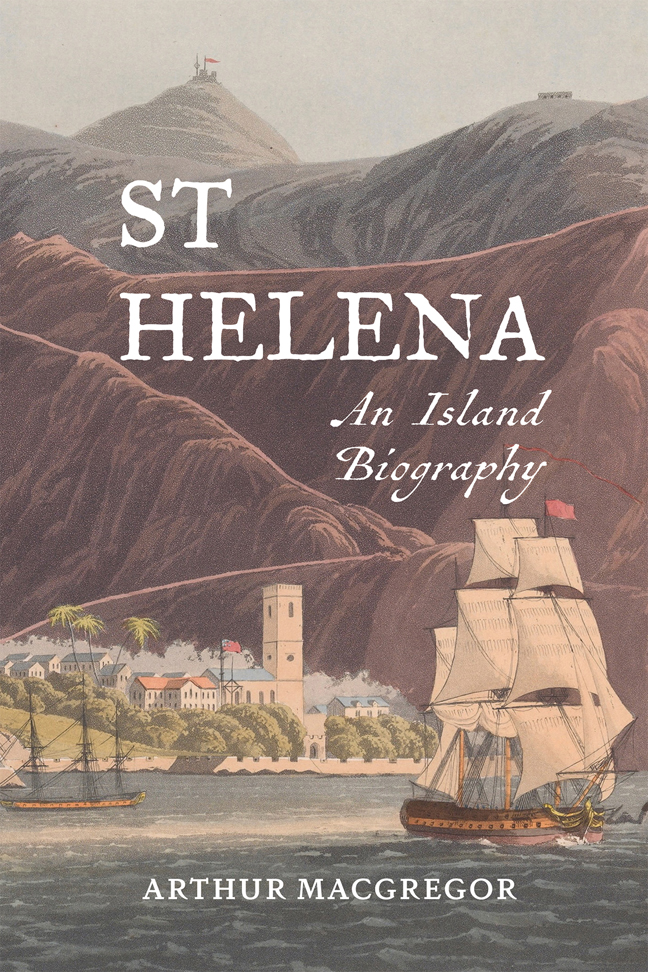Book contents
- Frontmatter
- Contents
- List of Illustrations
- Photo credits
- Preface
- Acknowledgements
- 1 Genesis
- 2 The breach: Europe and St Helena collide
- 3 Population and environment: early impacts
- 4 Population and environment: asserting control
- 5 ‘The citadel of the South Atlantic’
- 6 Scientists in transit: St Helena as a site for scientific investigation
- 7 Napoleon on St Helena
- 8 Later detainees, 1800s and 1900s
- 9 A place in the modern world
- Appendix: Governors of St Helena
- Bibliography
- Index
4 - Population and environment: asserting control
Published online by Cambridge University Press: 21 February 2024
- Frontmatter
- Contents
- List of Illustrations
- Photo credits
- Preface
- Acknowledgements
- 1 Genesis
- 2 The breach: Europe and St Helena collide
- 3 Population and environment: early impacts
- 4 Population and environment: asserting control
- 5 ‘The citadel of the South Atlantic’
- 6 Scientists in transit: St Helena as a site for scientific investigation
- 7 Napoleon on St Helena
- 8 Later detainees, 1800s and 1900s
- 9 A place in the modern world
- Appendix: Governors of St Helena
- Bibliography
- Index
Summary
Permanent settlement of the island so profoundly changed its face that within half a century the continuing viability of maintaining a foothold there was called into question. At his arrival as governor in 1714, Isaac Pyke was moved to wonder whether the population then established might not be better decanted in its entirety to Mauritius, which had recently been abandoned by the Dutch. For his ultimate superiors, the Court of Directors of the East India Company, however – no matter their disappointment at the seeming incapacity of the island to sustain itself independently – St Helena's strategic significance ruled out such a possibility. The viability of the island as a permanent settlement would continue to be questioned for decades to come.
Populating the island
Having received a charter to govern St Helena from Oliver Cromwell in 1657 (all copies of which appear to have been lost), the directors of the EIC – whose homeward-bound vessels had for the past nine years been formally ordered to assemble there to form convoys for the final leg of the voyage northwards – now found it expedient to establish a permanent presence on the island. Having debated the proposal on 15 December 1658, the directors decided on a show of hands ‘to send 400 men with all expedition to remayne on the island, with conveniences to fortifie and begin a plantation there’. Accordingly, a fleet commanded by Captain John Dutton sailed for St Helena the following February, escorted by the Marmaduke man-of-war, though evidently carrying rather fewer men than originally envisaged. Dutton was to become the first governor of the island (1659–61), with authority over the whole population of ‘planters’ – the term accurately reflecting both the population's status as Company-sponsored migrants and the expectation that one of their immediate priorities would be to render the settlement economically self-sufficient.
With this aim in mind, Captain Bowen of the London was instructed to set a course via St Jago on the Cape Verde Islands in order to acquire ‘all manner of plants, roots grains, and all other things necessarie’ for the establishment of the plantation, as noted in the previous chapter.
- Type
- Chapter
- Information
- St HelenaAn Island Biography, pp. 30 - 64Publisher: Boydell & BrewerPrint publication year: 2024

